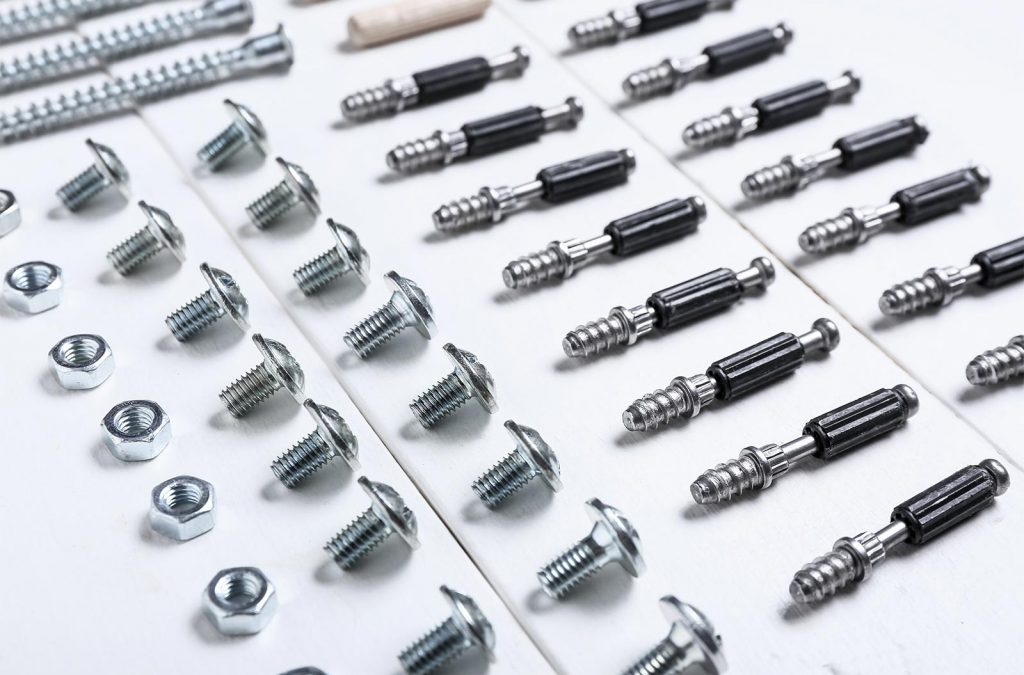Threaded Fasteners
Keep a Tight Fit with Threaded Fasteners

Threaded fasteners such as screws and bolts fasten objects, large and small, together and hold them in place. While some might interchange screws and bolts, there are some differences. There is nearly no aspect of modern life possible without threaded fasteners.
Screws
An externally threaded fastener that has a thread form that prohibits assembly with a nut having a straight thread of multiple pitch lengths is a screw. (example: wood screws, tapping screws.)
A screw is a fastener capable of being inserted into holes in assembled parts, mating with a preformed internal thread or forming its own thread, and being tightened or released by torquing the head.
Bolts
An externally threaded fastener that is prevented from being turned during assembly and which can be tightened or released only by torquing a nut is a bolt. (Example: round head bolts, track bolts, plow bolts.)
Internal threads refer to those on nuts and tapped holes, while external threads are those on bolts, studs, or screws. Threads can be produced by either cutting or rolling.
Cut threading is a process by which steel is cut away from a round steel bar to form the threads.
Advantages of Cut Threading:
- Few limitations with regard to diameter and thread length
- All specifications can be manufactured with cut threads<
Disadvantages of Cut Threading:
- Longer labor times
- The weakest area of any mechanical fastener is the minor diameter of the threads. Since the thread dimensions of a cut thread and rolled thread fastener are identical, there is no difference in strength. However, cut threading interrupts the natural grain structure of the round bar, whereas roll threading reforms it
Advantages of Roll Threading:
- Shorter labor times
- Weighs less than its Cut threaded bolts, thereby reducing the cost of the steel, plating, freight, and any other costs associated with the fastener that is based on weight
- Cold working makes threads more resistant to damage during handling
- Rolled threads are often smoother. The distance measured parallel to the thread axis, between corresponding points on adjacent threads, is the thread pitch. Unified screw threads are designated in threads per inch. This is the number of complete threads occurring in one inch of threaded length. Metric thread pitch is designated as the distance between threads (pitch) in millimeters
Additional Services
